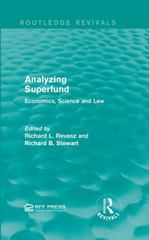Following the class slide, define the nominal exchange rate, E, as the price of the domestic currency in terms of foreign currency. 1. Consider the nominal exchange rate between the US dollar and UK pound. Suppose 1 pound is worth 1.5 dollars. Calculate E. 2. Consider an appreciation of the domestic currency. What would be the effect on the resulting E? 3. Consider a depreciation of the foreign currency. What would be the effect on the resulting E? 4. Suppose the price of US goods in dollars, P, is 10, and the price of British goods in pounds, P* = 20. Further assume that the nominal exchange rate is given by 2/3. What would be the price of US goods in pounds? Calculate the real exchange rate from this. 5. Calculate the price of British goods in dollars. Calculate the real exchange rate again with this (Using the prices of both goods expressed in dollars) 6. Suppose the inflation is higher in the US, while the nominal exchange rate does not change. Can you guess the effect on the real exchange rate? 7. (modified the question from the textbook Question 3) Consider two bonds, one issued in euros (() in Germany and one issued in dollars ($) in the US. Assume that both government securities are one- year bonds - paying the face value of the bond one year from now. The exchange rate, E, is 0.75. Face Value Price U.S. $10,500 $10,000 Germany E10,600 (10,000Follow the notation from the slide, considering the US as the domestic country. 7.1. Compute the nominal interest rate on each of the bond: 7.2. Assume that you are a US investor and you exchange and you exchange dollars for euros and purchase the German bond today. One year from now, it turns out that the exchange rate, E, is actually 0.72. What is your realized rate of return in dollar compared to the realized rate of return you would have made had you held the US bond? 7.3. What would be the expected exchange rate next year, A, consistent with UIP 7.4. Now, we introduce some costs for exchanging currencies. Suppose the bank charges you 1% fee, every time you change currencies. What would be the expected exchange rate next year, B, consistent with UIP. Is it bigger or smaller than what you get from 7.3








